Chicken Nugget Processing Line: From Farm to Fork, A Comprehensive Guide
The Rise of the Chicken Nugget: A Global Phenomenon
Chicken nuggets, once a simple fast-food indulgence, have soared to become a global culinary staple, beloved by people of all ages. Their journey from humble beginnings to international popularity is a testament to their universal appeal and adaptability. Understanding the consumer appeal behind these bite-sized morsels is key to appreciating the sophisticated processes involved in their production. Market trends continue to fuel the insatiable demand for chicken nuggets, making them a cornerstone of the modern food industry.

From Simple Snack to Culinary Staple
What was once considered a basic snack has evolved into a versatile ingredient and meal option. Chicken nuggets now grace menus in diverse settings, from school cafeterias to high-end restaurants, proving their versatility and broad appeal. Their transformation reflects changing dietary preferences and the desire for convenient, yet satisfying, food choices. This evolution highlights the nugget's ability to transcend its humble origins and become a staple in global diets.
Understanding the Consumer Appeal
The enduring popularity of chicken nuggets lies in their simplicity, convenience, and comforting taste. They offer a familiar flavor profile that appeals to a wide demographic, providing a sense of nostalgia for some and a simple, enjoyable meal for others. The ease of preparation and consumption, coupled with their affordability, makes them an attractive option for busy households and on-the-go individuals alike. This multifaceted appeal ensures their continued relevance in the ever-changing landscape of food consumption.
Market Trends Driving Demand
Current market trends indicate a steady, if not growing, demand for chicken nuggets worldwide. Factors such as increased protein consumption, the rise of convenience foods, and evolving dietary preferences all contribute to this sustained interest. Health-conscious consumers are also seeking leaner protein options, further boosting the appeal of chicken, particularly in nugget form. These trends suggest a bright future for the chicken nugget market, underpinned by robust consumer demand.
What Exactly is a Chicken Nugget Processing Line?
A chicken nugget processing line is a sophisticated assembly of machinery and processes designed to transform raw chicken into finished, packaged nuggets. It's a marvel of food engineering, ensuring consistency, safety, and efficiency in large-scale production. Defining the purpose and function of such a line reveals its critical role in meeting the global demand for chicken nuggets. The journey of raw material to ready-to-eat involves a series of carefully orchestrated steps, each essential for producing high-quality nuggets.
Defining the Purpose and Function
The primary purpose of a chicken nugget processing line is to convert raw chicken meat into uniform, flavored, and cooked nuggets that meet stringent quality and safety standards. Its function extends beyond mere production; it ensures scalability, efficiency, and compliance with industry regulations. This dual focus on quality and quantity makes the processing line an indispensable asset for any operation aiming to compete in the chicken nugget market.
Key Components at a Glance
A typical chicken nugget processing line comprises several key components, including deboning and trimming stations, grinding and mixing units, forming machines, cooking and frying apparatus, freezing systems, and packaging machinery. Each component plays a vital role in the production process, contributing to the final product's integrity and consistency. Understanding these components is fundamental to appreciating the complexity and precision involved in manufacturing chicken nuggets.
The Journey of Raw Material to Ready-to-Eat
The transformation of raw chicken into finished nuggets is a journey through various stages of processing. It begins with the sourcing and preparation of raw materials, followed by grinding, mixing, forming, cooking, freezing, and finally, packaging. Each stage is meticulously designed to ensure the highest standards of quality, safety, and efficiency. This journey underscores the importance of a well-designed processing line in delivering a product that consumers trust and enjoy.
Raw Material Preparation: The First Crucial Step
The foundation of any high-quality chicken nugget lies in the careful preparation of raw materials. This initial phase sets the stage for all subsequent processing steps, making it a crucial step in the production line.
Sourcing High-Quality Chicken
Sourcing high-quality chicken is paramount to producing exceptional chicken nuggets. The meat must come from reputable suppliers who adhere to strict animal welfare and quality standards. This ensures that the raw material is not only safe but also flavorful and nutritious. Selecting the right suppliers and establishing long-term relationships with them can significantly impact the final product's quality and consistency.
Cleaning and Trimming for Optimal Yield
Cleaning and trimming the chicken meat are essential steps to achieve optimal yield and remove any contaminants. This process involves removing excess fat, skin, and bone, leaving only the leanest meat for nugget production. Advanced machinery is often employed to ensure precision and efficiency, minimizing waste and maximizing the usable meat yield. This meticulous attention to detail is what separates premium nuggets from the rest.
Ensuring Food Safety from the Start
From the moment the chicken enters the processing facility, food safety is a top priority. Rigorous cleaning, sanitization, and inspection protocols are implemented to prevent contamination and ensure the meat remains safe throughout the production process. Compliance with food safety regulations is non-negotiable, as it protects consumers and maintains the integrity of the final product. This commitment to safety is a hallmark of responsible and trustworthy food production.
The Grind and Mix: Creating the Perfect Patty Base
Once the raw material is prepared, the next step is to grind and mix the chicken meat to create the perfect patty base. This stage is where flavors are infused, and textures are developed, setting the foundation for the final product.
Meat Processing: Grinding Techniques
Grinding the chicken meat is a critical step that influences the texture and consistency of the final nuggets. Various grinding techniques, from coarse to fine, are employed depending on the desired outcome. Advanced grinding machinery ensures uniformity and efficiency, reducing processing time while maintaining high standards of hygiene. The choice of grinding technique can significantly impact the nugget's texture, making it a key consideration in the production line design.
Seasoning and Binder Integration
Seasoning and binder integration are where the magic happens, transforming simple chicken meat into a flavorful and cohesive mixture. A careful balance of spices, herbs, and binders is added to enhance taste and texture. This step often involves precise dosing systems to ensure consistency across batches. The right combination of ingredients can elevate the humble chicken nugget into a culinary delight that stands out in a competitive market.
Achieving Consistent Texture and Flavor
Consistency in texture and flavor is a hallmark of high-quality chicken nuggets. Achieving this requires meticulous control over the grinding and mixing processes, as well as rigorous quality checks. Advanced technology, such as homogenization units and flavor infusion systems, plays a significant role in maintaining this consistency. Consumers expect every nugget to taste and feel the same, and achieving this uniformity is a testament to the sophistication of modern processing lines.
Forming the Nuggets: Precision and Speed
With the perfect patty base ready, the next step is to form the mixture into uniform nuggets. This stage demands precision and speed to meet the demands of large-scale production while maintaining quality.
Automated Forming Machines
Automated forming machines are the backbone of efficient nugget production. These sophisticated devices shape the chicken mixture into precise, uniform nuggets at high speeds. The automation ensures consistency and reduces the need for manual intervention, thereby minimizing contamination risks. Investing in state-of-the-art forming machines is essential for any operation aiming to scale up production without compromising quality.
Uniformity in Shape and Size
Uniformity in shape and size is critical for chicken nuggets, as it affects both aesthetics and cooking consistency. Advanced forming machines are calibrated to produce nuggets within tight tolerances, ensuring that each piece meets the same high standards. This uniformity is not just about appearance; it also ensures that all nuggets cook evenly, providing a consistent eating experience for consumers.
Customization Options for Brand Identity
Modern forming machines offer various customization options, allowing brands to create unique shapes, sizes, and even branding imprints on their nuggets. This flexibility is invaluable for brands looking to differentiate their products in a crowded market. Customization options can range from simple geometric shapes to intricate designs that reflect a brand's identity. Such customization enhances brand recognition and consumer appeal.
Cooking and Baking: Locking in Flavor and Texture
Cooking and baking are pivotal stages where the chicken nuggets develop their characteristic flavors and textures. This stage is where the raw mixture transforms into a cooked, palatable product ready for further processing.
Various Cooking Methods Explained
Several cooking methods are employed in chicken nugget production, each with its own advantages. Baking, for instance, offers a healthier alternative, while frying provides a crispy texture. The choice of method often depends on the desired final product characteristics and nutritional profile. Exploring these various methods helps in selecting the most suitable approach for a specific production line.
Temperature Control and Cooking Times
Precise temperature control and cooking times are crucial for achieving optimal texture and safety in chicken nuggets. Advanced cooking equipment allows for meticulous control over these parameters, ensuring that the nuggets are cooked thoroughly without over-drying. This precision is essential for maintaining product quality and meeting regulatory requirements.
Ensuring Juiciness and Crispiness
The balance between juiciness and crispiness is what makes chicken nuggets truly enjoyable. Achieving this balance requires careful control over cooking conditions and the use of high-quality ingredients. Modern cooking technology, such as controlled steam injection and rapid heat transfer systems, plays a significant role in enhancing these desirable textural qualities. The end result is a nugget that is both moist on the inside and perfectly crisp on the outside.
Frying: Achieving That Irresistible Crunch
Frying is a popular method for achieving the irresistible crunch that many consumers love in their chicken nuggets. This stage is where the final texture is developed, making it a critical step in the production line.
Deep Frying vs. Shallow Frying
Deep frying and shallow frying offer different textural outcomes for chicken nuggets. Deep frying provides a more pronounced crunch, while shallow frying offers a lighter texture. The choice between these methods depends on the desired product profile and the target consumer preference. Understanding these differences helps in tailoring the production process to meet specific market demands.
Oil Management and Quality
Oil management and quality are paramount in frying processes to ensure the final product's safety and flavor. High-quality oils with high smoke points are preferred to maintain stability during repeated use. Regular filtration and monitoring of oil quality are essential to prevent off-flavors and maintain compliance with health standards. Proper oil management not only enhances product quality but also extends the life of the frying equipment.
Achieving the Ideal Golden Brown Color
The golden brown color of fried chicken nuggets is not just about aesthetics; it's also an indicator of proper cooking. Advanced frying systems incorporate precise temperature controls and timing mechanisms to consistently achieve this ideal color. This visual appeal is a significant factor in consumer acceptance, making it a key consideration in the production process.
Freezing: Preserving Freshness and Shelf Life
Freezing is a crucial stage in extending the shelf life of chicken nuggets while preserving their quality. This stage demands specialized technology and careful handling to maintain the product's integrity.
Blast Freezing Technology
Blast freezing technology is commonly used in chicken nugget production to rapidly lower the temperature of the cooked nuggets. This quick freezing process helps maintain the nuggets' texture and flavor. The technology involves circulating extremely cold air at high velocity, ensuring that the freezing process is both rapid and uniform. Investing in advanced blast freezing equipment is essential for any serious nugget producer.
Maintaining Integrity During Freezing
Maintaining the integrity of chicken nuggets during freezing is critical to prevent damage to texture and appearance. Specialized freezing techniques, such as individual quick freezing (IQF), ensure that each nugget freezes individually, preventing them from sticking together. This attention to detail ensures that the final product remains visually appealing and texturally pleasing, even after prolonged storage.
Packaging for Distribution
Packaging is the final step before the chicken nuggets reach the consumer. This stage is where the product is protected, preserved, and prepared for distribution to retailers and end-users.
Packaging and Sealing: Ready for the Market
Packaging and sealing are the last stages in the chicken nugget production line, ensuring the product is ready for market distribution. This stage is critical in maintaining the product's freshness and integrity.
Types of Packaging Materials
Various packaging materials are used for chicken nuggets, each offering different benefits in terms of preservation and presentation. Common materials include polyethylene bags, trays with film covers, and cardboard boxes. The choice of material depends on factors such as shelf life requirements, transportation considerations, and brand presentation. Selecting the right packaging material is essential for protecting the product and enhancing its market appeal.
Vacuum Sealing for Longevity
Vacuum sealing is a popular method for extending the shelf life of chicken nuggets. This process removes air from the packaging, slowing down spoilage and preserving freshness. Vacuum-sealed packages also help maintain the nuggets' texture and flavor, ensuring a superior eating experience. This method is particularly effective for products intended for long-term storage or frozen distribution.
Labeling and Branding Essentials
Labeling and branding are vital components of the packaging process. Labels must include essential information such as ingredients, nutritional facts, and expiration dates. Additionally, branding elements like logos and brand names help in market identification and consumer recognition. Accurate and appealing labeling is crucial for compliance and marketing success.
Quality Control Checks: Ensuring Every Nugget Counts
Quality control is an ongoing process throughout the production line, but it reaches its zenith before the final packaging. These checks ensure that every chicken nugget meets the highest standards of quality and safety.
Visual Inspections and Automated Sorting
Visual inspections and automated sorting are integral parts of quality control in chicken nugget production. Automated systems can detect and remove any defective or misshapen nuggets, ensuring only the best products proceed to packaging. These systems are often equipped with high-resolution cameras and sophisticated algorithms to maintain consistency and accuracy. Such rigorous checks are essential for building and maintaining consumer trust.
Nutritional Content Verification
Verifying the nutritional content of chicken nuggets is a critical quality control step. Nutritional labels must be accurate, reflecting the actual content of the product. Advanced analytical techniques are used to measure fat, protein, carbohydrate, and moisture content. This verification ensures compliance with regulatory requirements and provides consumers with reliable nutritional information.
Compliance with Health and Safety Standards
Compliance with health and safety standards is non-negotiable in chicken nugget production. Regular audits and inspections are conducted to ensure that the production line adheres to all relevant regulations. This includes checks on hygiene practices, equipment sanitation, and process controls. Maintaining this compliance is not just about avoiding penalties; it's about upholding the integrity and reputation of the brand.
Waste Management and Byproduct Utilization
Waste management and byproduct utilization are increasingly important considerations in modern food production. Efficiently managing these aspects can significantly impact the sustainability and profitability of a chicken nugget processing line.
Minimizing Waste in Production
Minimizing waste in chicken nugget production involves optimizing processes to reduce off-cuts, trimmings, and other byproducts. Advanced machinery and process controls are employed to maximize yield and efficiency. This focus on waste reduction not only lowers production costs but also aligns with environmental sustainability goals. Waste minimization is a win-win for both the bottom line and the planet.
Creative Uses for Byproducts
Creative uses for byproducts can turn potential waste into valuable resources. For instance, chicken trimmings and off-cuts can be repurposed into pet food or further processed into other meat products. This approach not only reduces waste but also generates additional revenue streams. Embracing a circular economy mindset can significantly enhance the sustainability of a chicken nugget processing line.
Environmental Responsibility in Processing
Environmental responsibility is a cornerstone of modern food processing. Chicken nugget production lines are increasingly adopting practices that reduce their ecological footprint. This includes energy-efficient machinery, water recycling systems, and waste-to-energy initiatives. Such practices not only benefit the environment but also enhance the brand's image and appeal to eco-conscious consumers.
Automation in Chicken Nugget Production
Automation plays a pivotal role in modern chicken nugget production, driving efficiency, consistency, and scalability. The integration of advanced technologies is transforming the industry, making it more competitive and responsive to market demands.
The Role of Robotics and AI
Robotics and AI are at the forefront of automation in chicken nugget production. Robots handle tasks ranging from deboning and trimming to packaging, reducing the need for manual labor and minimizing contamination risks. AI systems optimize processes, predict maintenance needs, and enhance overall production efficiency. This synergy of robotics and AI is revolutionizing the industry, paving the way for smarter, more efficient food production.
Benefits of Automated Lines
Automated chicken nugget production lines offer numerous benefits, including increased productivity, reduced labor costs, and improved product consistency. Automation also minimizes human error, ensuring that every nugget meets the same high standards. Additionally, automated systems can operate 24/7, significantly boosting output and meeting the growing global demand for chicken nuggets. These advantages make automation an indispensable component of modern food processing.
Balancing Automation with Human Oversight
While automation offers significant benefits, balancing it with human oversight is crucial. Skilled operators are needed to monitor and manage automated systems, ensuring they function correctly and making adjustments as needed. This balance between automation and human expertise ensures that the production line remains flexible and responsive to changes in production requirements and market demands. Effective integration of both elements is key to maximizing the potential of automated chicken nugget production lines.
Energy Efficiency and Sustainable Practices
Energy efficiency and sustainable practices are becoming increasingly critical in chicken nugget production. As the industry evolves, there is a growing emphasis on reducing environmental impact while maintaining high production standards.
Reducing Water and Energy Consumption
Reducing water and energy consumption is a primary focus in modern chicken nugget production. Advanced technologies, such as heat recovery systems and low-energy cooking methods, are employed to minimize resource usage. Water recycling systems and efficient cooling mechanisms also contribute to overall sustainability. These practices not only reduce operational costs but also lessen the environmental footprint of the production process.
Implementing Eco-Friendly Technologies
Implementing eco-friendly technologies is another key aspect of sustainable chicken nugget production. This includes the use of renewable energy sources, biodegradable packaging, and waste treatment systems. Innovations like solar-powered cooking equipment and biogas generation from byproducts are gaining traction. Such technologies align the industry with global sustainability goals while also appealing to environmentally conscious consumers.
The Future of Green Processing Lines
The future of chicken nugget production lies in green processing lines that prioritize sustainability at every stage. Innovations in biodegradable packaging, carbon-neutral energy sources, and circular economy principles are shaping the industry's future. Embracing these trends is not just about compliance; it's about staying ahead of the curve and meeting the evolving expectations of consumers and regulators alike.
Initial Investment and Cost Considerations
Embarking on a chicken nugget production venture involves significant initial investment and ongoing cost considerations. Understanding these financial aspects is crucial for planning a successful and sustainable operation.
Breaking Down the Capital Expenditure
Breaking down the capital expenditure for a chicken nugget processing line involves evaluating the costs of machinery, facility setup, and initial inventory. Machinery costs can vary widely based on scale and technology, while facility costs include site preparation, utilities, and compliance with building codes. Initial inventory costs cover raw materials and packaging supplies. A detailed breakdown helps in accurate financial planning and budgeting.
Operational Costs and Maintenance
Operational costs and maintenance are ongoing expenses that must be factored into the financial plan. These include energy consumption, labor costs, raw material procurement, and regular maintenance of machinery. Maintenance costs can be mitigated through preventative measures and energy-efficient equipment. Careful management of these operational costs ensures the long-term viability and profitability of the production line.
Calculating Return on Investment
Calculating the return on investment (ROI) for a chicken nugget processing line involves comparing the total investment to the expected revenue and profitability over time. Key factors include production volume, market demand, operational efficiency, and pricing strategies. A positive ROI indicates that the investment is generating more value than it costs to maintain. Accurate ROI calculations are essential for justifying the initial expenditure and planning for future growth.
Choosing the Right Processing Line for Your Needs
Selecting the right chicken nugget processing line is a critical decision that impacts the entire operation's success. Several factors must be considered to ensure the chosen line aligns with your business goals and operational requirements.
Assessing Production Volume Requirements
Assessing production volume requirements is the first step in choosing a processing line. This involves evaluating current demand, potential market expansion, and seasonal fluctuations. The chosen line must be capable of meeting these volume demands efficiently without compromising quality. Overestimating or underestimating production capacity can lead to lost opportunities or operational inefficiencies, making this assessment a crucial part of the decision-making process.
Scalability and Future Growth
Scalability and future growth potential are important considerations when selecting a chicken nugget processing line. The line should be designed to accommodate future increases in production volume or product diversification. Modular designs and flexible configurations can provide the necessary scalability. Planning for future growth ensures that the initial investment remains viable and supports the long-term success of the business.
Selecting Reputable Manufacturers
Selecting reputable manufacturers is paramount to acquiring a reliable and efficient chicken nugget processing line. Researching manufacturers' track records, industry reputation, and customer reviews can provide valuable insights. It's also beneficial to visit existing facilities or request demonstrations to assess the quality and performance of their equipment. Partnering with a reputable manufacturer ensures that the production line operates smoothly and meets the highest standards of quality and safety.
Installation and Commissioning: Bringing the Line Online
Installation and commissioning are pivotal phases that bring the chicken nugget processing line from concept to reality. These stages require careful planning, coordination, and attention to detail to ensure a seamless transition to full production.
Site Preparation and Layout Planning
Site preparation and layout planning are the foundational steps in bringing a chicken nugget processing line online. This involves designing a facility layout that optimizes workflow, minimizes transportation distances, and ensures compliance with health and safety regulations. Proper site preparation, including utility connections and waste management systems, is essential for a smooth operation. Thoughtful planning at this stage sets the stage for efficient and effective production.
Integration with Existing Infrastructure
Integrating the new processing line with existing infrastructure is a critical consideration, especially for businesses expanding or upgrading their operations. This integration must ensure compatibility with current systems, such as utilities, waste disposal, and packaging lines. Careful coordination between the manufacturer and facility engineers is necessary to achieve a seamless integration that enhances overall operational efficiency.
Training and Operational Readiness
Training and operational readiness are the final steps before the chicken nugget processing line begins full-scale production. Comprehensive training programs for operators and maintenance staff are essential to ensure they can effectively manage and troubleshoot the equipment. Operational readiness also includes final checks of all machinery, calibration of control systems, and establishment of standard operating procedures. This thorough preparation ensures that the line operates smoothly and efficiently from day one.
Regulatory Compliance and Industry Standards
Navigating regulatory compliance and adhering to industry standards are crucial for the successful operation of a chicken nugget processing line. Compliance not only ensures legal operation but also builds consumer trust and brand reputation.
Food Safety Regulations and Certifications
Food safety regulations and certifications are non-negotiable in chicken nugget production. Compliance with standards set by organizations such as the FDA, USDA, and HACCert is essential. Certifications like ISO, BRC, and FSSC 22000 demonstrate a commitment to quality and safety. Regular audits and inspections are necessary to maintain compliance, ensuring that the final product is safe for consumption and meets the highest industry standards.
Global Standards and Export Considerations
Global standards and export considerations are important for businesses looking to sell chicken nuggets in international markets. Different countries have varying regulations and quality expectations, requiring adjustments in production processes and packaging. Understanding these global standards and ensuring that the production line can meet them is essential for successful market entry and expansion. This may involve investing in additional equipment or modifying existing processes to align with specific export requirements.
Staying Updated with Evolving Regulations
Staying updated with evolving regulations is a continuous challenge in the food processing industry. New research, consumer demands, and environmental concerns can lead to changes in regulations and standards. Proactive monitoring of these changes and adapting the production line accordingly is necessary to remain compliant and competitive. Engaging with industry associations and regulatory bodies can help stay informed about upcoming changes and prepare for them in a timely manner.
Innovations Shaping the Future of Nugget Production
Innovations are continuously shaping the future of chicken nugget production, driving improvements in efficiency, sustainability, and product quality. Staying abreast of these advancements is essential for maintaining a competitive edge in the industry.
Advanced Forming and Cooking Technologies
Advanced forming and cooking technologies are at the forefront of innovation in nugget production. These technologies include precision forming systems, multi-stage cooking processes, and controlled atmosphere cooking. Such innovations enhance product consistency, reduce energy consumption, and improve overall efficiency. Investing in these advanced technologies can significantly boost the competitiveness of a chicken nugget processing line.
Flavor Enhancement and Nutritional Fortification
Flavor enhancement and nutritional fortification are emerging trends in chicken nugget production. Innovations in ingredient technology allow for the addition of functional ingredients that enhance nutritional profiles without compromising taste or texture. Techniques like encapsulation and microencapsulation ensure that these ingredients are released at the optimal time during digestion, maximizing their benefits. These advancements cater to the growing demand for healthier, more nutritious food options.
The Rise of Plant-Based Alternatives
The rise of plant-based alternatives is a significant innovation shaping the future of nugget production. Plant-based nuggets, made from ingredients like soy, pea protein, and mushrooms, are gaining popularity among health-conscious and environmentally aware consumers. The production lines for these alternatives often require specialized equipment and processes. Adapting to this trend can open new market opportunities and diversify product offerings, ensuring long-term relevance in a changing food landscape.
Case Study: Successful Implementation of a Processing Line
A real-world case study can provide valuable insights into the successful implementation of a chicken nugget processing line. This section explores a specific example, highlighting key aspects of the project.
Real-World Example and Lessons Learned
A poultry processing company decided to invest in a state-of-the-art chicken nugget production line to meet growing market demand. The project involved careful planning, selection of advanced machinery, and thorough training of the workforce. The lessons learned from this project include the importance of detailed planning, the value of partnering with experienced suppliers, and the need for continuous staff training. These insights are invaluable for any similar ventures.
Overcoming Challenges and Setbacks
The case study company faced several challenges during the implementation, including equipment delays and initial operational hiccups. However, through proactive problem-solving and collaboration with the equipment manufacturer, these challenges were successfully overcome. This experience underscores the importance of resilience and adaptability in navigating the complexities of setting up a new production line. Learning from setbacks is crucial for long-term success.
Must-Read Blogs For Chain Restaurants Owner

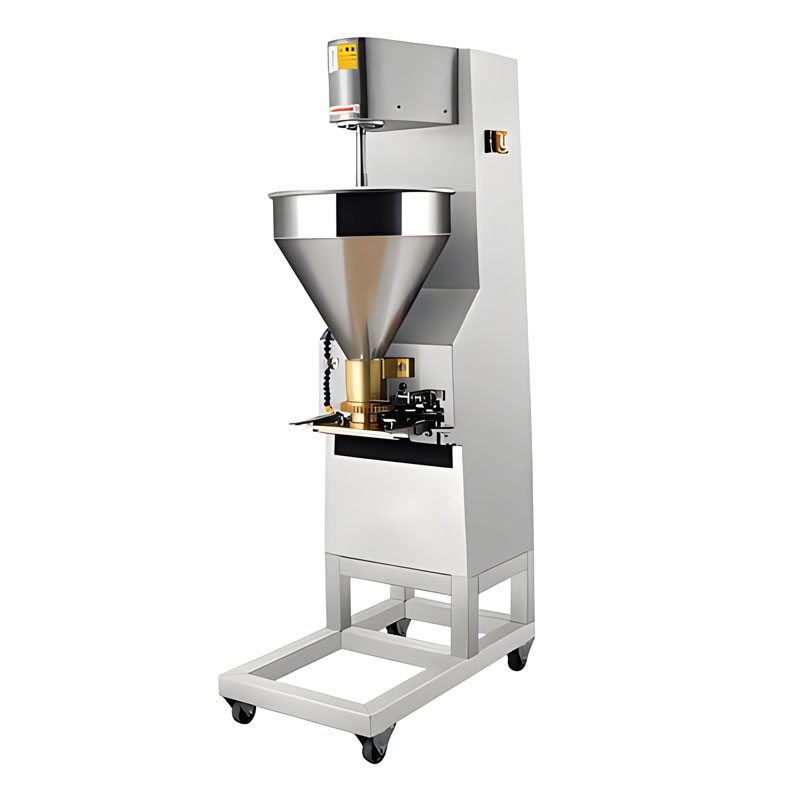

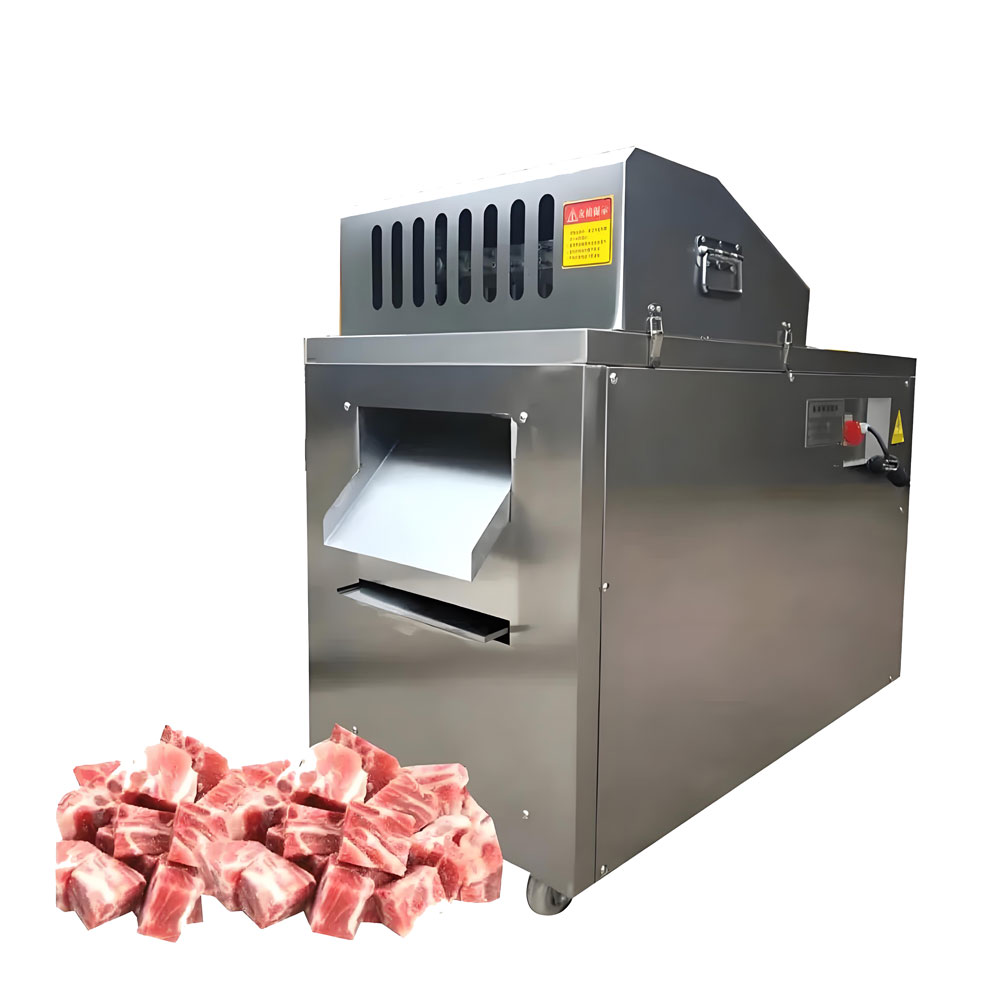
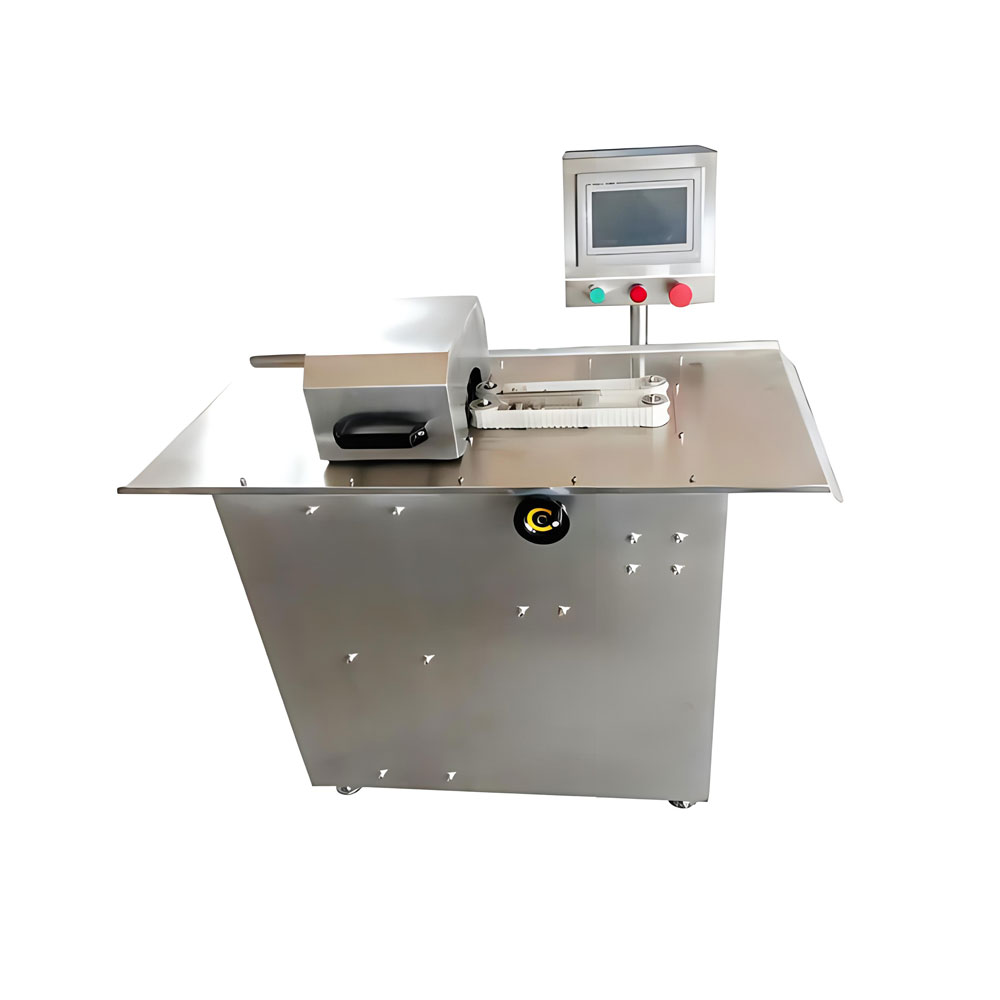
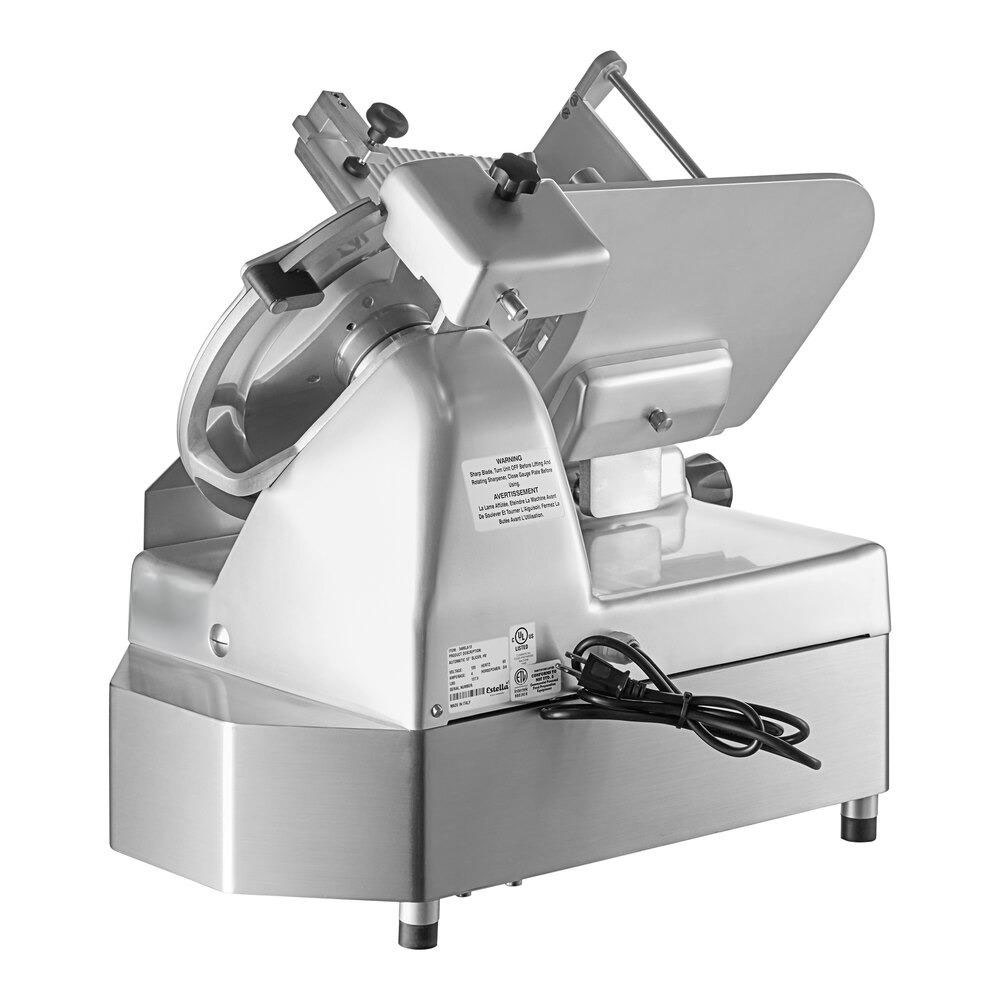
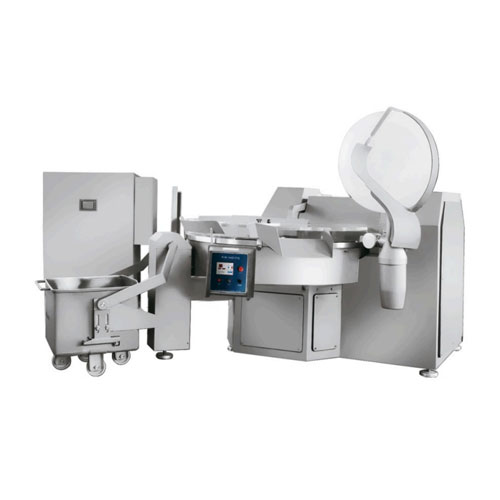

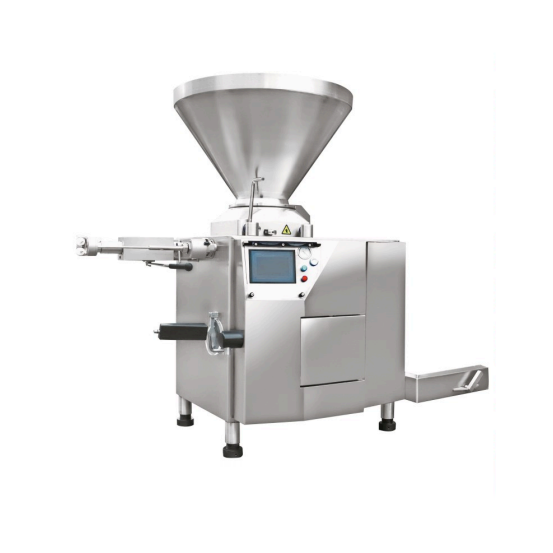
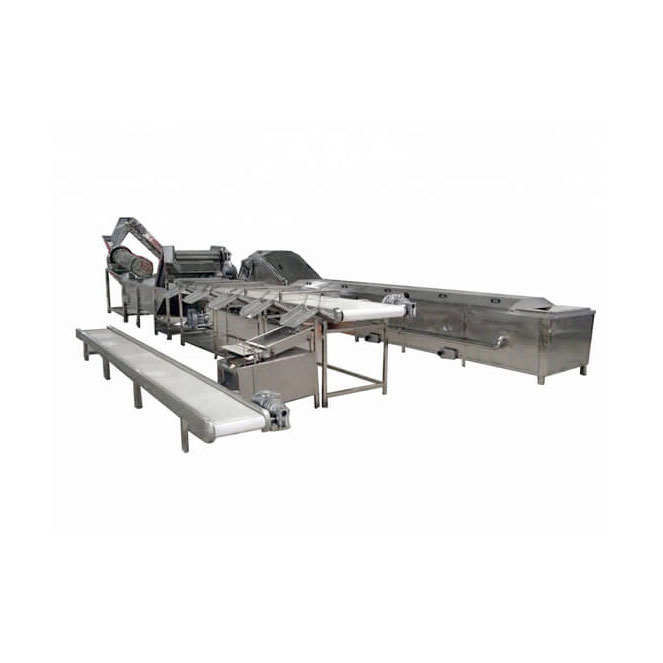
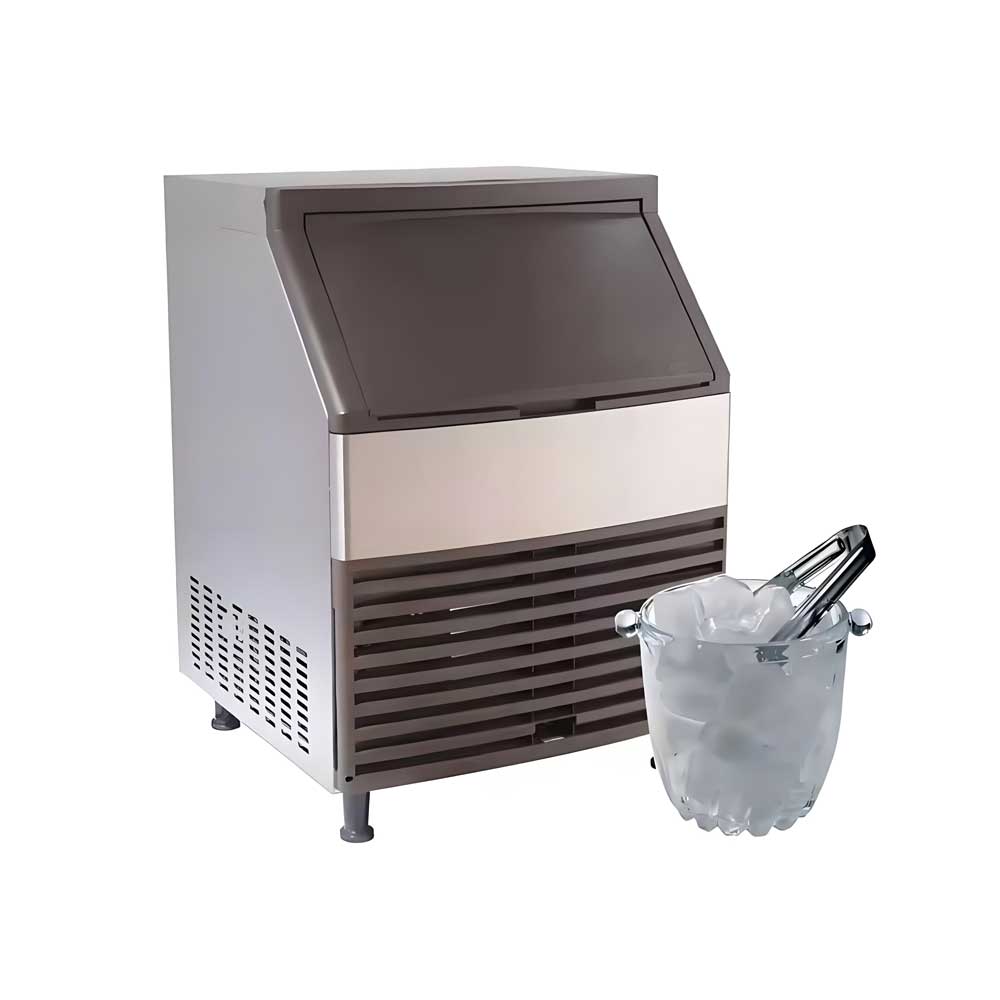
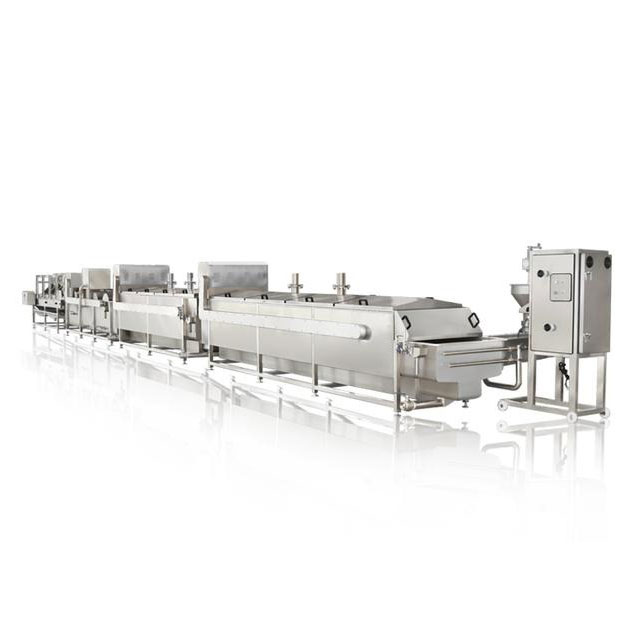 Chicken Nugget Processing Line
Chicken Nugget Processing Line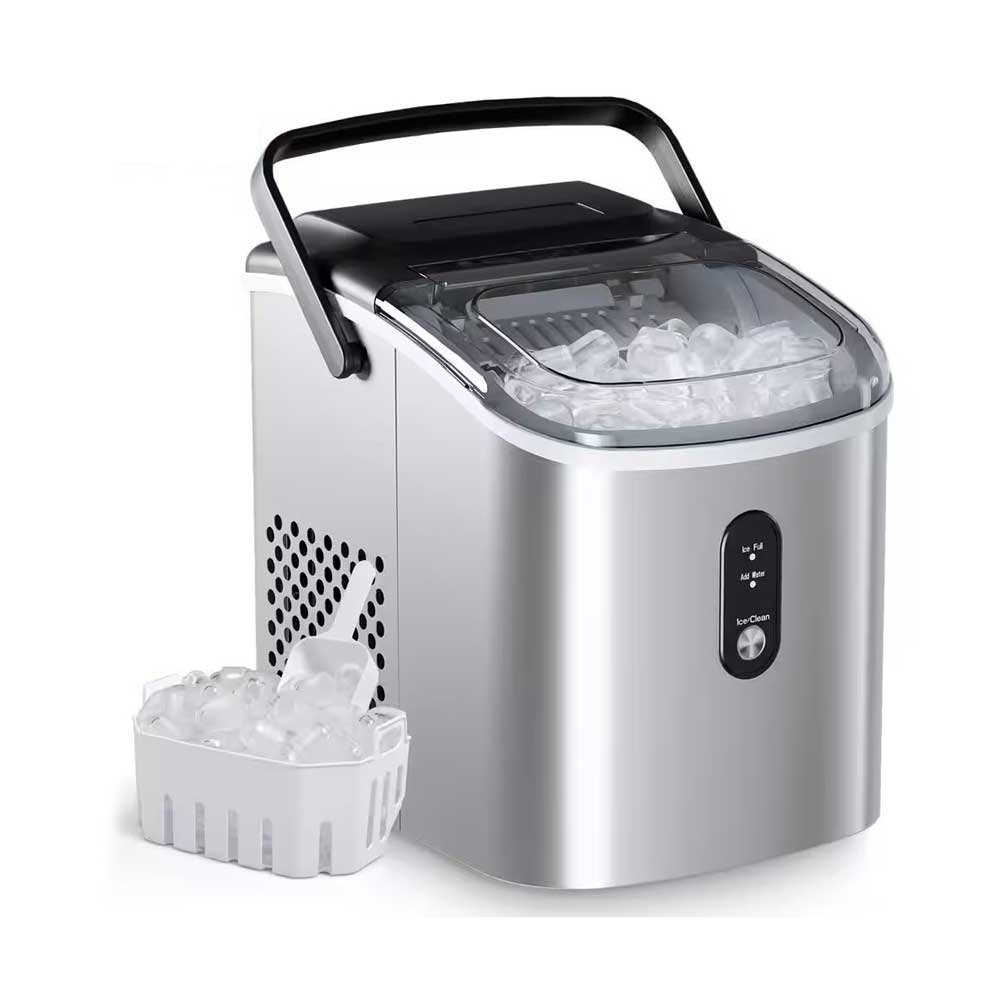 Portable Flake Ice Machine
Portable Flake Ice Machine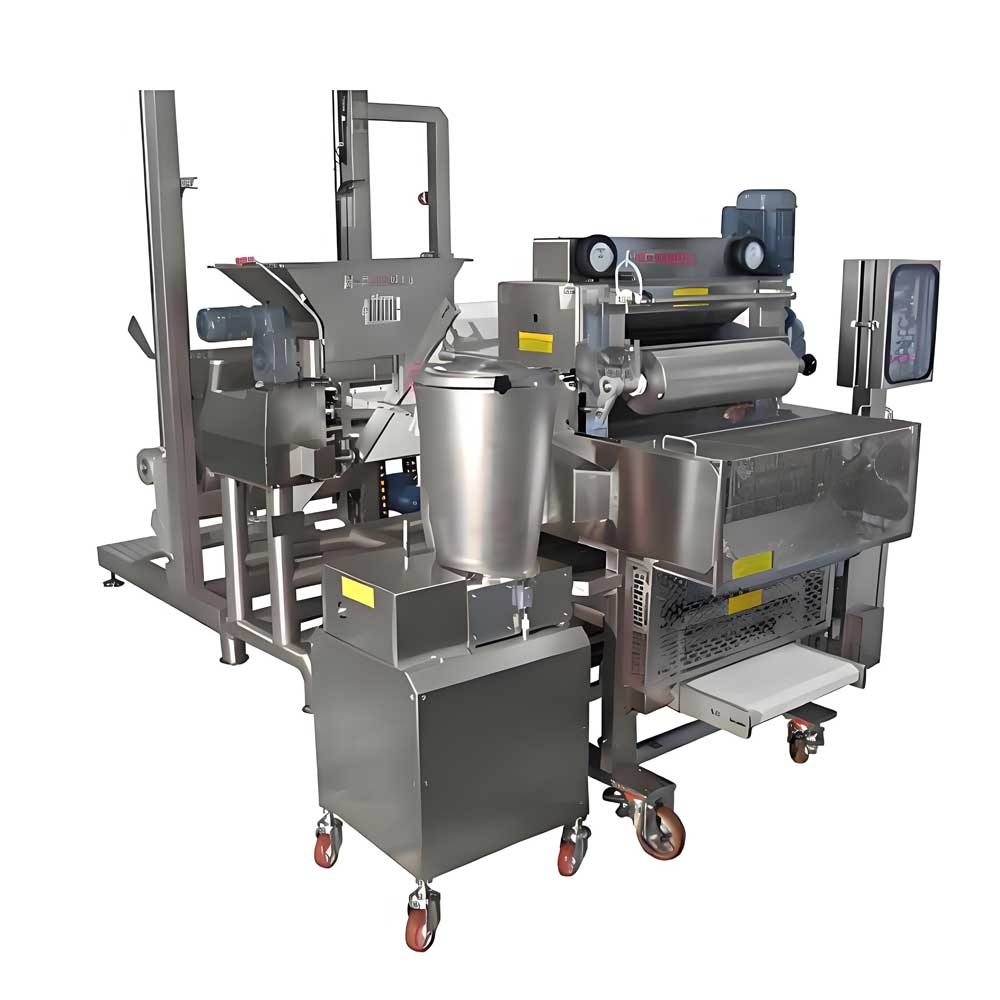 Pelmeni Making Machine
Pelmeni Making Machine
Ready to Get Started?